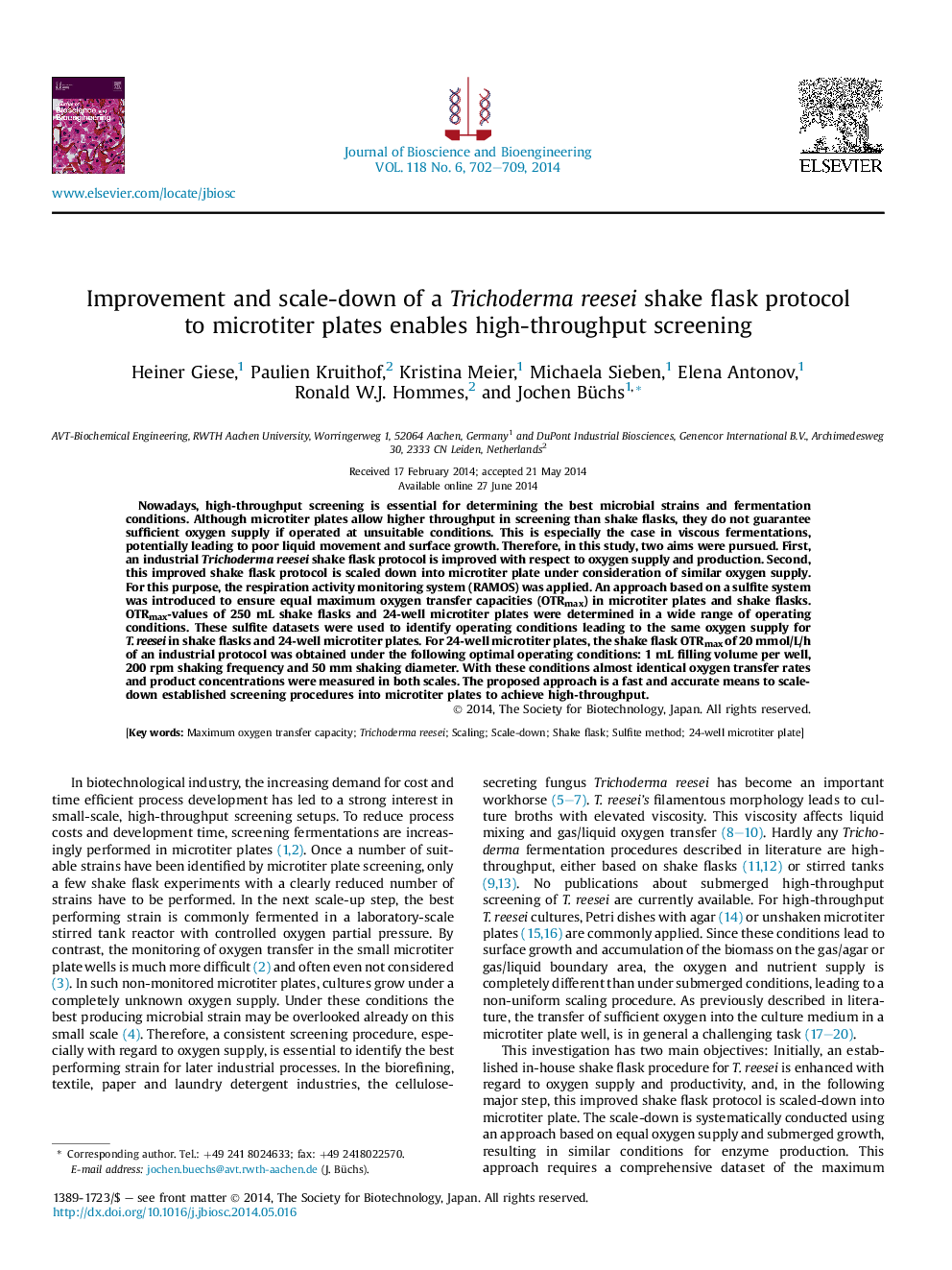| Article ID | Journal | Published Year | Pages | File Type |
|---|---|---|---|---|
| 20499 | Journal of Bioscience and Bioengineering | 2014 | 8 Pages |
Nowadays, high-throughput screening is essential for determining the best microbial strains and fermentation conditions. Although microtiter plates allow higher throughput in screening than shake flasks, they do not guarantee sufficient oxygen supply if operated at unsuitable conditions. This is especially the case in viscous fermentations, potentially leading to poor liquid movement and surface growth. Therefore, in this study, two aims were pursued. First, an industrial Trichoderma reesei shake flask protocol is improved with respect to oxygen supply and production. Second, this improved shake flask protocol is scaled down into microtiter plate under consideration of similar oxygen supply. For this purpose, the respiration activity monitoring system (RAMOS) was applied. An approach based on a sulfite system was introduced to ensure equal maximum oxygen transfer capacities (OTRmax) in microtiter plates and shake flasks. OTRmax-values of 250 mL shake flasks and 24-well microtiter plates were determined in a wide range of operating conditions. These sulfite datasets were used to identify operating conditions leading to the same oxygen supply for T. reesei in shake flasks and 24-well microtiter plates. For 24-well microtiter plates, the shake flask OTRmax of 20 mmol/L/h of an industrial protocol was obtained under the following optimal operating conditions: 1 mL filling volume per well, 200 rpm shaking frequency and 50 mm shaking diameter. With these conditions almost identical oxygen transfer rates and product concentrations were measured in both scales. The proposed approach is a fast and accurate means to scale-down established screening procedures into microtiter plates to achieve high-throughput.
